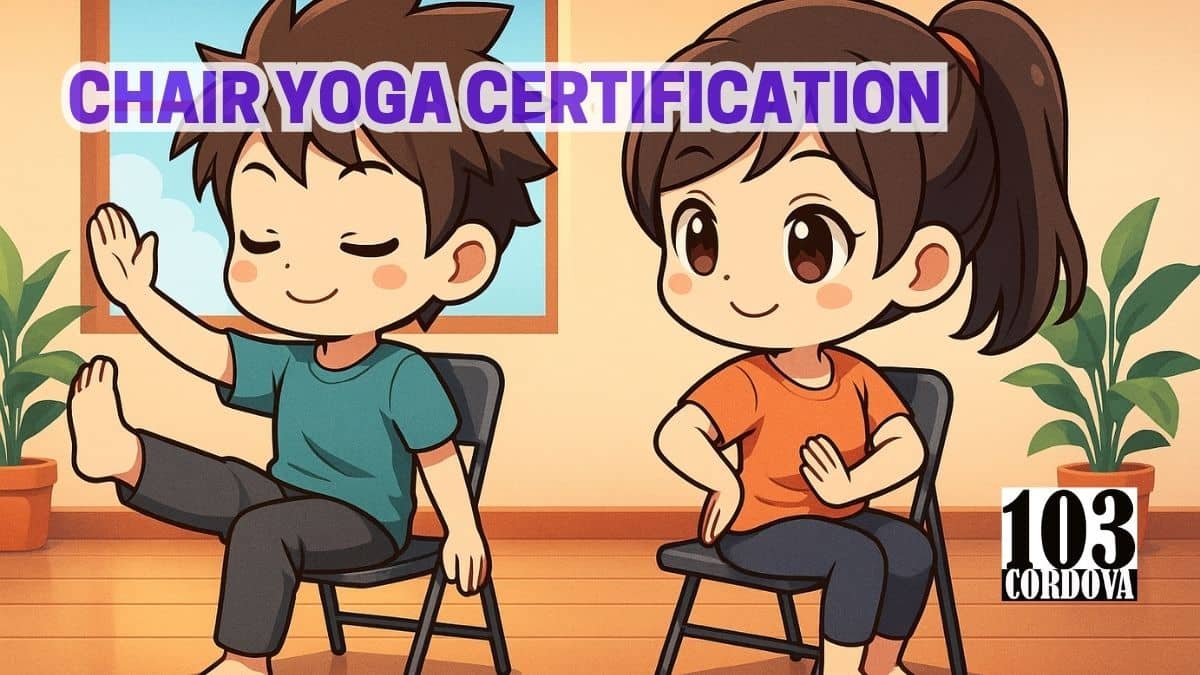Chair yoga certification teaches that yoga can fit any body or life stage.
The program shows teachers how to remove barriers like pain, fear, and limited movement that keep many people away from regular classes.
It also stresses building a warm, non-judging space where every student feels seen and respected.
This training boosts an instructor’s confidence when guiding groups with mixed abilities.
With these tools, more people can enjoy movement, breath, and calmness in a way that feels safe.
1. Chair Yoga Philosophy And Inclusivity
The first part of the training focuses on the idea that yoga belongs to everyone, not just the strong or flexible.
Teachers practice language that celebrates diversity and honors each person’s unique strengths.
They learn to spot and break small habits, like praising only a big range of motion, that can make some students feel left out.
By keeping the classroom non-judgmental, they help students build a sense of community and belonging.
This mindset guides every later lesson and sets the tone for truly inclusive teaching.
🧘 How Yoga Incense Enhances Focus and Concentration During Practice
2. Adapting Traditional Poses For The Chair
Certification courses show how to turn floor or standing shapes into stable seated versions without losing their benefits.
Instructors use chairs as props, adding blocks or straps when extra reach or support is needed.
For each pose, they learn at least two or three variations so students can choose the level that feels right.
Teachers also study warning signs, like joint strain or breath holding, that tell them a pose needs to be changed or skipped.
This wide toolkit lets every student share the same flow while staying safe and comfortable.
🧘 How Does Vinyasa Krama Yoga Enhance Mind-Body Connection and Mindfulness?
3. Sequencing Classes For Diverse Groups
A chair yoga class plan must work for seniors, office workers, and people managing chronic pain all at once.
Training teaches instructors to open with gentle joint warm-ups, build toward stronger seated or supported standing work, then finish with breath and rest.
They learn to pace the class so low-energy students are not rushed while more active students stay engaged.
Clear cues and thoughtful transitions keep the group moving together even when individuals choose different pose versions.
Such balanced sequencing makes the session feel smooth, safe, and rewarding for everyone.
🧘 How Yoga Alignment Enhances Your Posture and Overall Well-Being
4. Safety Guidelines And Proper Alignment
Safety lessons cover common limits like hip tightness, balance loss, and fragile joints.
Teachers learn to set chairs at the right height, place blocks under feet, or slide cushions behind backs to support healthy alignment.
They practice giving simple visual checks, knees over ankles, spine tall, shoulders relaxed, to spot trouble early.
When risk appears, they know how to offer a gentler option or quick pause instead of pushing through pain.
These habits build trust and keep injuries out of the classroom.
🧘 Why You Should Practice Pranayama Poses with Proper Guidance and Technique
5. Modifications For Special Populations
Chair yoga certification looks closely at the specific needs of groups such as people with arthritis, stroke recovery, or balance disorders.
Instructors learn clear contraindications, like avoiding deep twists after certain surgeries, and safe alternatives.
Props become key tools: a strap shortens arm reach, while a folded blanket eases hip pressure.
Teachers check in with students before class to understand personal limits and adjust the plan on the spot.
This responsive approach lets everyone practice without feeling singled out.
🧘 How Yoga Hotspots Around the World Are Transforming Wellness Tourism
6. Breathwork And Mindfulness Techniques
Breath training includes easy seated versions of belly breathing, counted breaths, and gentle humming.
Teachers pair these exercises with body scans or short guided pictures in the mind to deepen calm.
They learn to weave breath cues into movement so students link inhaling, exhaling, and posture changes.
These skills help ease stress, sharpen focus, and support heart and lung health.
Because the practices stay simple and chair-based, they fit students with any mobility level.
🧘 Why Eco-Friendly Yoga Products Are Taking Over the Market
7. Teaching Ethics And Professionalism
Certification stresses respecting student privacy, asking consent before touch, and honoring cultural backgrounds.
Teachers review trauma-informed principles so cues stay choice-centered rather than bossy.
They set clear boundaries, like ending sessions on time and avoiding medical claims, to model professional behavior.
Regular self-reflection and continued study are encouraged to keep skills and awareness growing.
These ethical habits shape a class where students feel safe, valued, and well-led.
🧘 Why Yoga Jewelry Is More Than Just a Fashion Statement
8. Practice Teaching And Mentorship
Trainees lead mini-classes for peers while mentors observe and take notes.
Feedback focuses on clarity of cues, pacing, and how well each student felt included.
Instructors then adjust and try again, turning advice into real improvements.
Ongoing mentorship offers a sounding board for questions that arise once they teach the public.
This loop of practice and support builds lasting confidence.
🧘 How to Choose the Perfect Yoga Apparel for Maximum Comfort and Flexibility
9. Access To Resources And Community Support
Graduates receive detailed manuals, video libraries, and ready-made lesson outlines to spark ideas.
Online groups let teachers share wins, troubleshoot tricky cases, and swap fresh sequences.
Monthly webinars and newsletters keep them current on research or policy changes that affect their work.
Knowing help is only a post away reduces isolation, especially for teachers in small towns.
The steady flow of resources fuels growth long after the course ends.
10. Empowering Students And Building Confidence
Teachers use plain, encouraging language like “notice how your back feels taller” rather than praise focused on the depth of stretch.
They point out progress in breath control, posture, or mood, reminding students that success has many forms.
Students are invited to choose pose versions, giving them control over their own practice.
This choice, plus steady positive feedback, helps shift focus from limits to abilities.
As confidence rises, many students report standing easier, breathing deeper, and approaching daily tasks with more courage.
🧘 Mindful Yoga Studio in Marikina City
💡 Conclusion
Chair yoga certification gives teachers the philosophy, safety skills, and creative tools needed to open yoga to all bodies.
It trains them to shape poses, sequences, and language so students feel secure and welcome.
Ethics, mentorship, and community ties support growth long after the course ends.
When teachers apply these lessons, the classroom becomes a place where differences are not just accepted but celebrated.
In this way, certified instructors play a key role in proving that yoga truly is for everyone.
🧘 Our Services
Join our Yoga Classes for all ages at 103 Cordova Tower, Marquinton Residences, Cirma Street, Sto. Niño, Marikina City.
Our classes are open to kids, adults, and seniors; no experience needed.
We focus on simple movements, safe stretches, and a calm space for everyone.
For more details, send us a message on Facebook or use the contact form on our website.
You can also call us at 0917 622 5780.
We’d love to hear from you!

